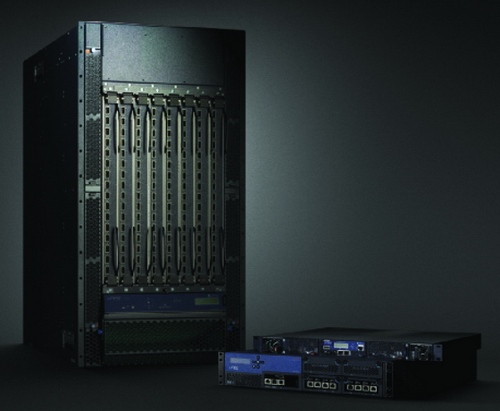As the latest VMworld begins its transformation from current event to memory, now probably is as good a time as any to reflect on what it all means, if anything, for the future of data centers, the IT industry, and various big-name vendors.
There has been a lot of talk about public, private, and hybrid clouds at VMworld, but I think that’s something of a side issue. Yes, certain enterprises and organizations will partake of cloud services, and, yes, many enterprises will adopt a philosophy of IT as service within their data centers. They’ll make data-center management and automation decisions accordingly.
Even so, at a practical level, it is virtualization that continues to drive meaningful change. The robust growth of virtualization has introduced problems (optimists would call them opportunities), too. How do you automate it, how do you manage it, how do you control it so that it remains a business asset rather than a potential liability?
Reciprocal Choking
At a fundamental level, that’s the big problem that data centers, whether within enterprises or service providers, must solve. The ultimate solution might involve data- center convergence — the integration and logical unification of servers, storage, networking, and orchestration — but it’s not clear whether that is the only option, or whether the price of vendor lock-in is worth the presumed benefit. Most enterprise customers, for the time being, will resist the urge to have one throat to choke, if only because they fear the choking might be reciprocal.
Indeed, as the vendor community has reacted to the popular appeal of data-center virtualization, the spectacle has been fascinating to watch. Who will gain control?
It’s not a simple question to answer, because the vendors themselves won’t have the final say; nor will the industry’s intelligentsia and punditry, formidable as they may be. No, the final arbiters are those who own, run, and manage the data centers that are being increasingly virtualized. Will network managers, or at least those with a strong networking sensibility, reign supreme? Will the leadership emerge from the server, application, or storage side of the house? What sorts of relationships will these customers have with the vendor community, and which companies will serve as trusted counsel?
Ownership of Key Customer Relationships
As virtualization, by necessity, breaks down walls and silos, entirely new customer relationships will develop and new conversations will occur. Which vendors will be best positioned to cultivate or further develop those relationships and lead those conversations?
Meanwhile, vendors are placing their bets on technologies, and on corporate structures and strategic priorities. HP is an interesting case. Its Enterprise Servers Storage and Networks (ESSN) seems increasingly titled toward storage and servers, with networking — though not an insignificant consideration — relegated increasingly to a commoditized, supporting role. Just look at the executive management at the top of ESSN, both at HP headquarters and worldwide. You’ll notice an increasingly pronounced storage orientation, from Dave Donatelli on down.
Cisco, meanwhile, remains a networking company. It will try to imbue as much intelligence (and account control) as possible into the network infrastructure, even though it might be packaged under the Unified Computing Systems (UCS) moniker. That might not be a bad bet, but Cisco really doesn’t have a choice. It doesn’t own storage, is a relative neophyte in servers, and doesn’t have Oracle’s database or application pedigree.
Dell’s Move
IBM and Dell will be interesting to watch. Dell clearly places a lot of emphasis on owning its own storage technology. It has its own storage offerings right up through the midrange of the market, and it tried hard to buy 3PAR before
being denied by a determined HP, which had its own reasons for winning that duel.
Questions remain over the importance Dell attaches to networking. We should learn soon enough whether Dell will continue to partner, with Juniper and Brocade, or whether it will buy its way into the market. To the extent that Dell continues to maintain its networking partnerships, the company effectively will be saying that it deems networking a secondary priority in its data-center strategy. IBM already seems to have made that determination, though there’s always a possibility it will revisit its earlier decision.
This puts Juniper in an interesting position. It needs to continue to
push toward its Project Stratus intelligent flat network, thereby enhancing its value to customers and its importance to Dell and IBM as a partner. Brocade faces a similar challenge in storage networking, though it still seems to have a lot of work ahead of it in repositioning the Ethernet-switching portfolio it obtained through its acquisition of Foundry Networks.
Microsoft Pays for Inattentiveness
I have not mentioned Microsoft. VMware threw down a gauntlet of sorts earlier this week when it suggested that the importance of Windows as an operating system had been undercut severely by the rise of
virtualization. For the most part, I agree with that assessment. Microsoft has some big challenges ahead of it, and it has been attempting to distract us from its shortcomings by talking a lot about its cloud vision. But a vision, no matter how compelling, is thin gruel if it is not supported by follow through and execution. In virtualization, Microsoft was caught flat-footed, its gaze averted by commotion outside the data center and the enterprise, and it is paying a steep price for that inattentiveness now.
Even though marketing hype has pivoted and tilted toward the cloud, virtualization continues to recast the data center.





